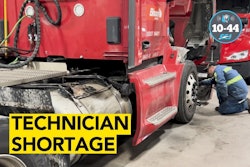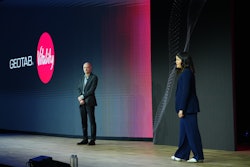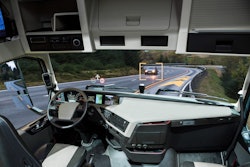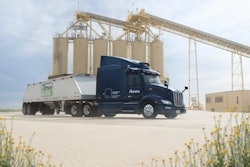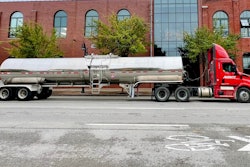Roger Hoene, a professional driver for 43 years with more than three million miles under his belt, has consistently been a top driver in terms of safety scorecard at 3 Sisters Logistics.
So when Illinois-based 3 Sisters’ President Leslie Tarble got a call that he had been in an accident, her first question was, “Who hit him?”
It was a beautiful sunny day – “Couldn’t ask for a better day to drive,” according to Hoene – when a young driver in a pickup truck pulled out of a private driveway and into Hoene’s lane as he was loaded down, heading to a job site. Hoene swerved to miss the driver – a move that landed him and his truck sideways in the road, but a move that also “saved the boy’s life.”
“When I saw he wasn’t hurt, that was the highlight of the day,” Hoene said in a video that was shown at the Geotab Connect conference held last week in Orlando. “They put the cameras in the trucks, which I wasn’t a fan of at first. Old school, I guess you’d say. But it turned out to be a good thing for me to have the cameras in there.”
3 Sisters had installed Lytx Surfsight dash cameras, layered on top of their Geotab devices, less than 10 days before the accident. The video proved to the sheriff, who initially tried to blame Hoene, who was at fault.
[RELATED: Surveys find driver stress directly impacts road safety]
“That could have been a very costly situation and through no fault of our own,” Tarble said during a session at Geotab Connect. “It just reaffirmed our investment in the technology and having the forward-facing cameras and gave our drivers all that buy-in as well.”
Tarble said during the session titled “Navigating collision overhauls: Leveraging technology for safety and cost savings” that 3 Sisters’ insurance premiums went down after installing Geotab devices, and they stayed the same when the company installed cameras, though they were expected to rise significantly.
“It paid for itself in a week – absolutely priceless,” Tarble said.
During the session, Tarble, along with TBC Corp. safety supervisor Christina Rubio, and Ron Adams, vice president of risk management at global insurance brokerage firm NFP, discussed how telematics can improve safety and reduce insurance costs.
Rubio, whose company also recently installed Lytx dash cameras, said TBC started with basic telematics to ascertain safety metrics across its operation. The company then identified trends to determine the regions that needed the most improvement and created a timeline to roll out additional technology from there.
Rubio said her team has been able to deduce context from the data – vehicle issue, type of road, driver behavior, etc. – to customize coaching calls, enabling them to intercept before an accident could occur.
[RELATED: Transforming your fleet for the future]
“We wanted to be proactive. Our company is all about having safety first,” she said. “We needed to create a culture of education to be able to teach the managers and teach the drivers what they were looking at, what our goal was as a company, why were we're using this technology and how we were planning to implement.”
And Adams said being proactive – instead of reactive – is key.
He said fleets need to use their data to proactively coach drivers and make them safer rather than trying to use it on the back end of an accident. Plaintiffs attorneys can subpoena Geotab data, he said, and fleets want that data to be in their favor.
“If you have the data, you have to do something with it,” Adams said. “If you can’t show that you used the data to improve, you’re going to show that you knew there were bad drivers but didn’t do anything to change it.”
He said telematics is a game changer from an insurance company underwriting perspective, ultimately lowering cost of loss and improving net income. Rubio added that technology is here to stay, so fleets need to start investing in technology for safety now based on their goals.
“You don't want to be last,” she said.




